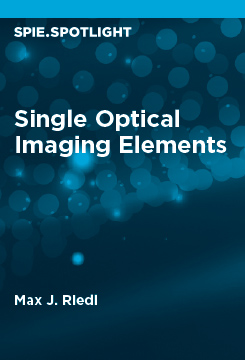|
The most common shape of a lens is a light-transmitting disc with at least one
spherical surface. There is also the diffractive lens, usually called a diffractive
optical element (DOE), which redirects light by diffraction. The third single element is the imaging mirror. A combination of the first two types is called a hybrid. This arrangement is used for chromatic aberration correction or thermal stabilization of the lens.
The observations in this Spotlight are limited primarily to the so-called “thin-lens concept,” wherein the lens thickness is ignored in the calculations. The effects on the image of all primary aberrations, spherical and chromatic, coma, astigmatism, as well as field curvature, distortion, and lateral color, will be analyzed and discussed with numerical examples. For the aberration calculations, the free lens diameter is assumed to be the aperture stop. While the observations concentrate primarily on the situation where the object is located at infinity, the situation where the object is located at a finite distance from the lens will also be covered. The effects of placing the aperture stop a distance away from the lens are briefly covered.
In addition to the most common lens with spherical surfaces, the benefits of an aspheric surface will be demonstrated. A ball lens (total sphere) and the catadioptric Mangin mirror are also included.
The purpose of this Spotlight is to concisely summarize with practical demonstrations what can be achieved with a single optical imaging element and what the limits are. It is not intended to be a complete treatment of all imaging elements. This text serves as a quick orientation as well as an introduction. A number of references for further research are listed.
|
|
Online access to SPIE eBooks is limited to subscribing institutions.
|


